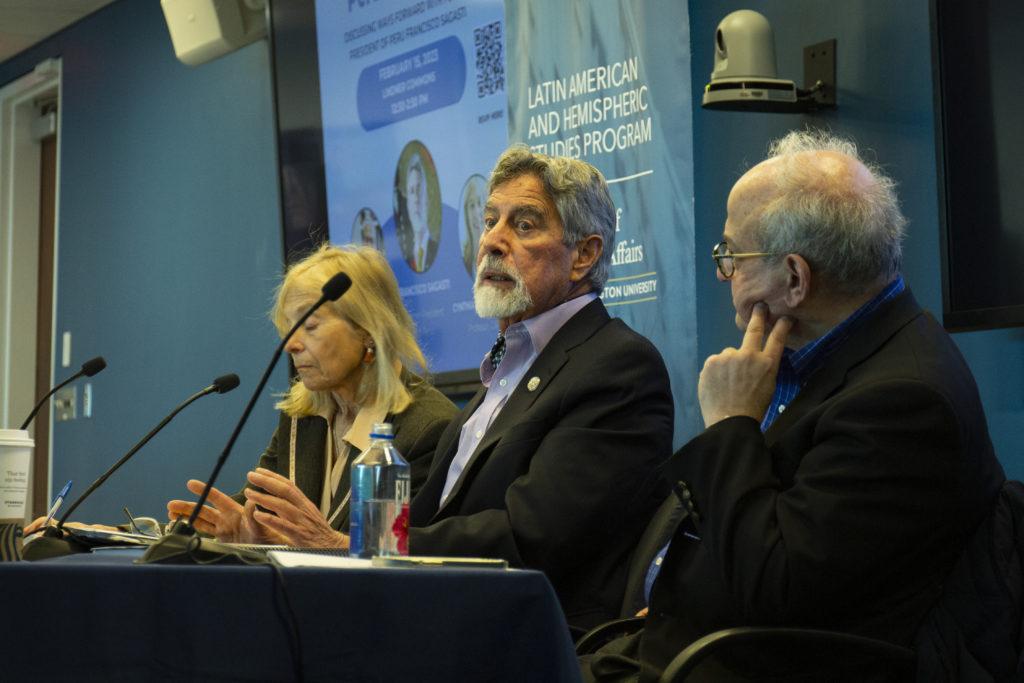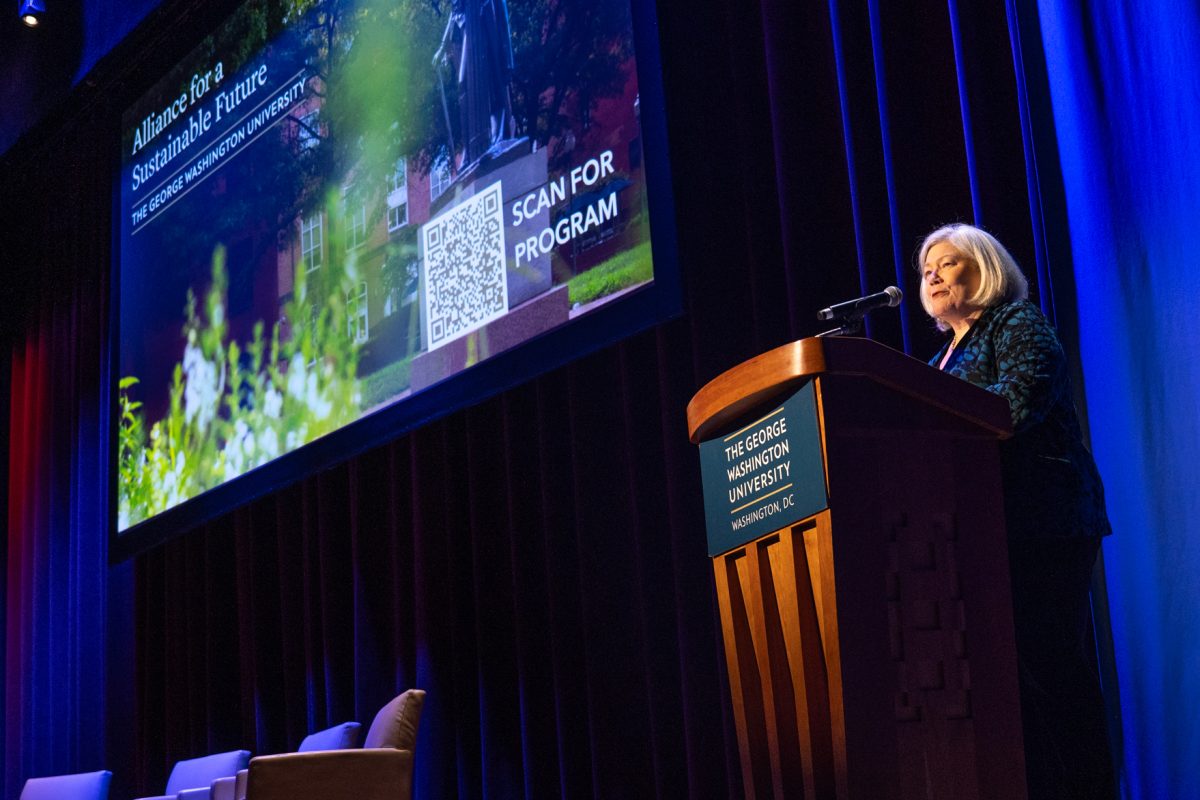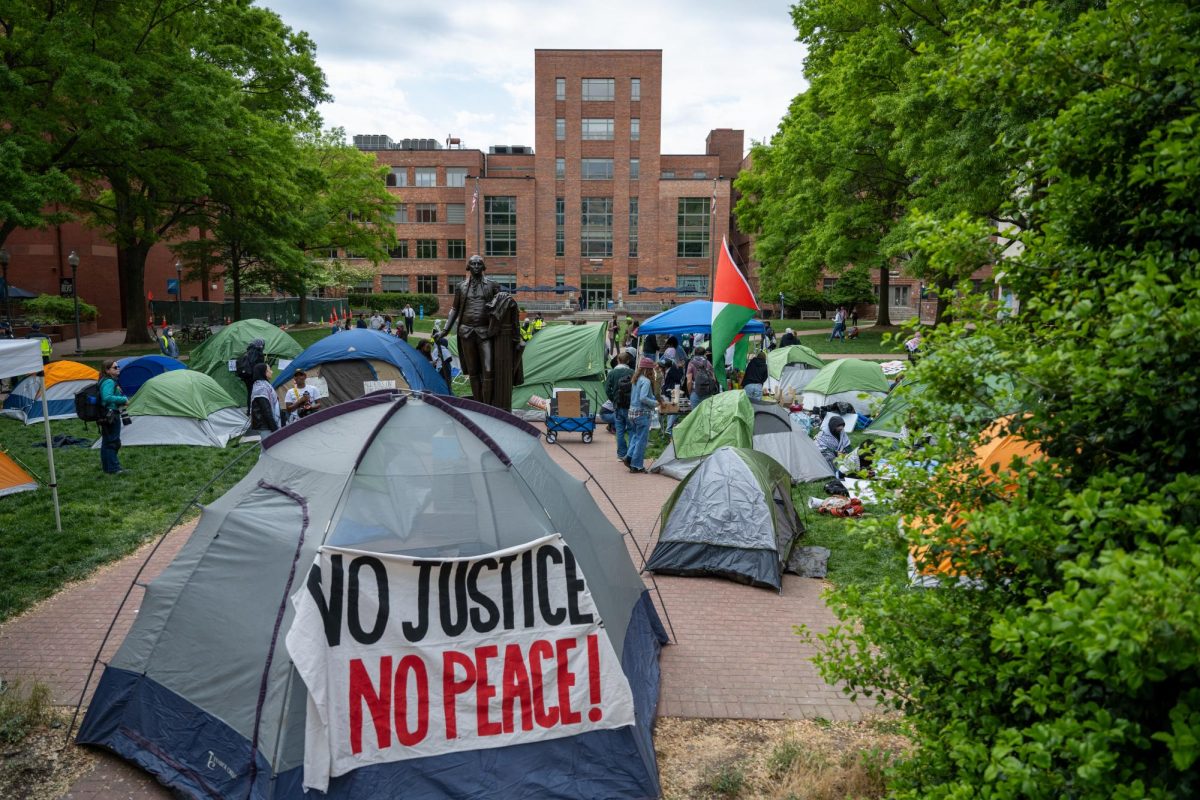Former Peruvian President Francisco Sagasti discussed the causes and potential solutions to recent political unrest in Peru during an event at the Elliott School of International Affairs Wednesday.
Sagasti, who served as Peru’s interim president from November 2020 to July 2021, was joined by Cynthia McClintock, a professor of political science and international affairs, and Michael Shifter, the former president of the think tank Inter-American Dialogue. The speakers discussed the state of Peru’s democracy at the event, hosted by the Latin American and Hemispheric Studies Department in partnership with the Onero Institute, Delta Phi Epsilon and LATAM@GW.
Then-President Pedro Castillo rode a wave of left-wing, rural and working-class support to clinch the office in 2021 but faced accusations of corruption and obstructing justice, leading to two impeachment attempts by the Peruvian Congress.
In an attempt to stop a third vote on his impeachment, Castillo announced plans to dissolve Congress, install an emergency government and draft a new constitution. Congress removed him from office, arrested him and replaced him with his vice president, Dina Boluarte.
In response, groups of mostly rural, working-class Peruvians began leading protests in support of Castillo and demanding the resignation of Boluarte. The protests resulted in more than 50 deaths after demonstrations turned into violent clashes with law enforcement officers, according to reports.
Sagasti said the lack of a strong national identity is one reason why it is challenging to govern Peru effectively. He said a legacy of colonialism still permeates Peruvian society and divides Indigenous and working-class people from white and wealthier people.
“The problem in Peru is that we have a gradation of social groups, in which one group simply despises the other one and so on and so on,” Sagasti said.
Sagasti said the mass media has the power to change Peruvians’ attitudes and values. He said because those in the media often mirror the language and ideals of the elite in the country, there is a disconnect between journalists and working-class peoples.
“I have seen many well-intentioned journalists basically have a really particular view of the country and write and report in ways that, you’ve reproduced the traditional way of thinking in elites, both in business and government, political parties, civil societies, academia and so on,”
Shifter said he believes the events in Peru are evidence of change on a larger scale throughout Latin America. He said despite some recent economic successes, there is still a level of distrust in institutional systems and leaders which could be indicative of what happens when governments don’t work to solve larger structural problems like polarization among citizens.
“Peru, it was the vanguard, in some ways, of a lot of what we’re seeing in Latin America and the low trust in political leaders and the low trust in institutions, we see that in all the polls, Peru is still at rock bottom,” Shifter said. “Even a country that was growing, almost the highest rate economically in all of Latin America had rock bottom levels of trust.”











